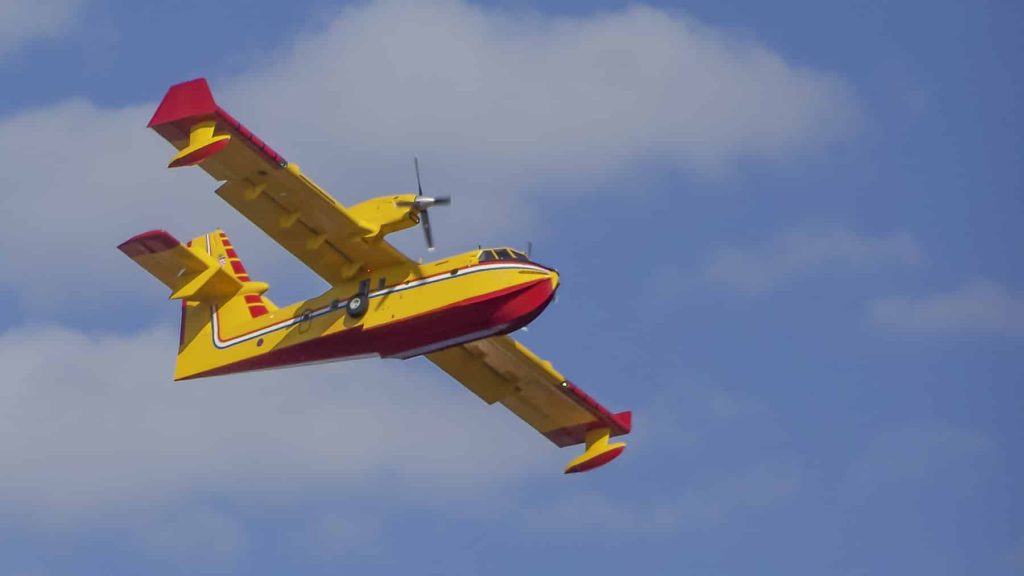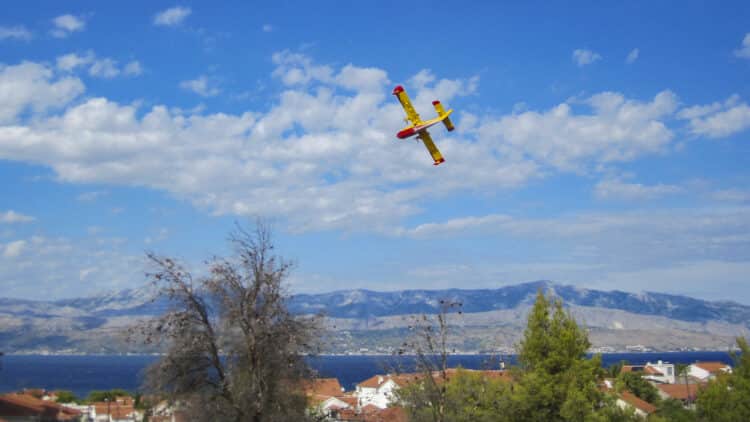In many regions of Europe, it is exceptionally hot and dry. At the same time, the risks of forest fires are increasing in these areas; Many fires have already broken out. Firefighting aircraft are often the only “fire brigades” that can extinguish on impassable ground – from the air. How do fire planes (fire boats) work, and do I act as a sports leader if a fire plane unexpectedly appears near the place to pick up water? SeaHelp reported.
It doesn’t matter in which regions of Europe you are currently traveling, there is hardly a forested area that is not currently affected by the risk of fire. Many fires have already broken out, and firefighters are working permanently, for example in France, Spain, Italy and Portugal, but also in Croatia.
If these natural shelters are adjacent to tourist attractions, they can quickly become dangerous to people (Check out our roundup from July 29, 2022).
Firefighting aircraft can only penetrate the sources of fire in rough terrain
Firefighting aircraft, which are aircraft specially equipped with firefighting tanks, are often the only way to get to the source of a fire – for example in rough terrain or in forested areas – until you can put out the fire from the air.
Conventional fixed-wing aircraft are usually refueled with an extinguishing agent prior to use. Flying boats (and amphibious aircraft, which can also be used as a firefighting aircraft), on the other hand, take fire water from a body of water during the flight – without having to land on the water in between.
The Canadair CL-215 was the first firefighting aircraft; It can land on land or on water
It was the first aircraft specifically designed as a firefighting aircraft Canadair CL-215 By Bombardier The most modern and widespread version of Canadian private jets Canadair CL-415 It has four fire tanks (as opposed to its smaller sister 215 T, which only has two fire tanks).
The flying boat, specially designed to fight fires from the air, can take off and land on land as well as on water thanks to its amphibious hull.
Unlike ground-based firefighting aircraft, Canadairs can immediately after dropping the 6000L water ballast above Fire Landing in the nearest lake or at sea and absorbing fresh extinguishing water during the flight. In comparison with a hydrofoil or a full-fledged glider, the machine “glisses” along the water at about 130 km / h (about 70 knots). The actual intake of water during the flight takes only about 12 to 14 seconds and is done through fill tubes or plates submerged in water during the gliding process; Helicopters suck water in a special external tank during flight. The water in the fire tanks is pressurized within seconds through an opening in the bottom of the structure. Usually just under half a kilometer (or a quarter of a nautical mile) on the sea or lake is enough for you to refill the fire tanks. This stage of the flight, in which fresh water is taken to fight the fires, is not without its dangers – the crew of the firefighting aircraft must consider weather and sea conditions in their maneuvers: how high are the waves, from which direction are the winds blowing? What strength does he have? It should also be noted that firefighting aircraft are several tons heavier once they enter the water, which makes them more complex and slower to maneuver. However, it is important for the pilot to at least recognize in time the wrecks of ships or boats and yachts in the area designated for collecting firefighting water, because of which the collision of the aircraft with a boat or yacht at a speed of 130 km / h will have serious consequences – for both the aircraft and the boat.
The stage of the journey in which the firefighting water is consumed is not without dangers

“Total coffee aficionado. Travel buff. Music ninja. Bacon nerd. Beeraholic.”







 Athletes pilots must stay away from or leave the areas of operation of firefighting aircraft immediately
Athletes pilots must stay away from or leave the areas of operation of firefighting aircraft immediately
More Stories
Wolfsburg instead of Wörthersee: The first GTI meeting starts at Volkswagen headquarters
Pecco Bagnaia (Ducati): Testing on the new Panigale/MotoGP
From autumn onwards, U2 will be playing again at Karlsplatz.